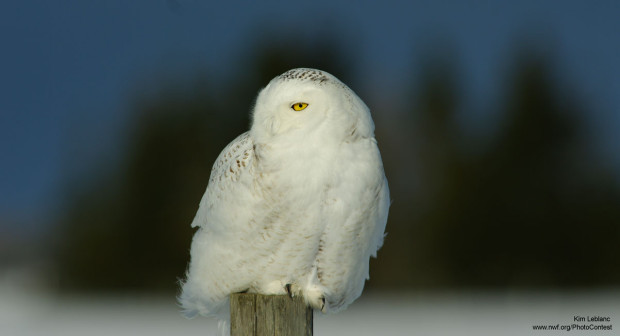We have much more to do and your continued support is needed now more than ever.
How to Enjoy Owls in Winter (or Anytime)
Owls have been in the spotlight recently, from the DC snowy owl to the Colbert Report. They are incredible and elusive creatures. Here are some ways you can experience and learn about owls first-hand this winter.

Go on an owl walk, or “owling.”
Winter is actually a great time to search for owls (as long as it’s not too cold). Most trees are without leaves, which makes it easier to see an owl’s silhouette. Dawn and dusk are good times to go, since there is a bit of light and the owls are more active (depending on the species and location).

Learn common owl calls.
Even if you can’t see an owl, chances are you’ll hear them. Try to learn the different calls of North American owls and match them to the ones you hear.
Build an owl nesting box.
Welcome owls to your backyard with a nest box. Many owl species need to find a suitable nesting cavity in order to survive in an area. To make the nesting box safer and more suitable for owls, consider the following (adapted from our owl activity guide).
- Wood is the best building material. Avoid using metal as it gets too hot when exposed to the sun.
- Find out which owls live in your area and build the appropriate box.
- Pay special attention to the size & height of the entrance hole, drainage for the bottom of the box, and ventilation.
- Place the box where there is no danger of cats or other predators, and consider a tin guard for extra protection.
- Don’t disturb the nest while the birds are in it.
- Clean it out annually, when the birds are no longer occupying the box.
- Provide a layer of nesting material (wood shavings, for example).
- Make sure the box is at least 10 feet off the ground — 15-30 feet is ideal.
- Attach the box to a tree, building or post.

Visit a local nature or wildlife rehabilitation center.
Many wildlife rehabilitation centers have educational birds that were rescued, but wouldn’t survive in the wild. Resident educational birds are a fantastic way to experience owls up-close. I met Hazel at the Audubon Wildlife Care Center in Portland. I was also lucky enough to watch Julio (a female great horned owl) hoot! Nature centers often offer guided owl hikes or similar programs, browse some of your local nature sites to learn more.

Read a book or watch a movie.
The snowy owl buzz has thrown Hedwig into the spotlight for Harry Potter fans, but there are other owl characters to enjoy. Who could forget Owl from Winnie the Pooh? And the movie Legend of the Guardians: The Owls of Ga’Hoole is a filled with owls. Enjoy books and movies about owls when it’s cold and you’d rather curl up indoors.

How to Help Owls
- Symbolically adopt an owl: Snowy Owl, Great Gray Owl, Barn Owl, or Great Horned Owl.
- Certify your backyard as a habitat for owls and other wildlife.
- Help research about snowy owls through Project SNOWstorm, the Massachusetts Audubon Snowy Owl Project or a number of other owl research projects.





















